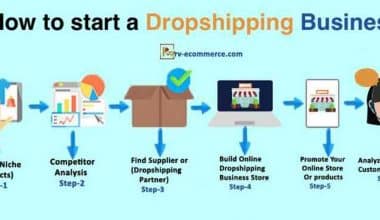Electronic Data Interchange (EDI) is a protocol that allows two systems to share information through a secure channel. Introduced in the 1960s, the use of EDI was not that common in the transportation industry until big companies like Ford and General Motors started using it in the 1980s. Soon after that, transportation and logistics saw no way other than EDI to exchange information.
EDI has remained a crucial part of the transportation industry as it allows secure channels and faster ways to share information between multiple parties involved. Here is how EDI works for a transportation company.
How does EDI Work?
EDI is software that helps a transportation business in the following ways.
#1. Sharing Information
EDI shares information between computers. There remains no need for postal services or email. Businesses can share important business documents through this software. With no human beings involved. EDI ensures the error-free exchange of information.
The pieces of information or the business documents in the transportation business are usually shipping details, cargo details, purchase orders, invoices, etc.
#2. Standardized Format
Since the exchange of information is between computers, the format has to be kept standard. For a particular document, the sender and the receiver have to operate in a similar format so that both computers can make sense out of the encoded information and translate it into plain English.
#3. Multiple Parties Involved
In the transportation business, multiple parties mean warehouses, clients, shippers, brokers, and carriers. EDI ensures that all the parties involved are integrated and in constant communication with one another. All these people are called business partners as they exchange information with one another. Communication is a crucial part of a transportation company.
Benefits Of Using EDI
Transportation EDI has many benefits for the transportation business.
#1. Security
EDI provides a secure channel to exchange important business information. There are nearly zero chances of information being leaked to the competitors.
#2. Integration
EDI ensures the integration of all parties involved. The software can easily integrate multiple systems to ensure the smoothness of the information exchange process. The software’s fully-automated solutions allow the digitization of the whole transportation business.
#3. Simple Interface
The user interface of the software is so simple that you do not need any kind of prior training. Anyone can operate the software with efficiency and full effectiveness. The software allows adaptable modules and functionalities compatible with different systems.
#4. Fast Approach
service provider, you can experience great customer service. EDI shares information much more quickly than other means. Secondly, depending on the EDI
#5. Cost-Effective
Probably the biggest advantage of using EDI for the transportation business is that it cuts extra costs. Firstly, it limits manual labor. Secondly, you do not have to pay for postal bills or pay for a fax machine. Secondly, as it minimizes the chances of error, you do not have to worry about paying extra because the information exchanged had some mistakes.
Bottom Line
EDI has made the exchange of information easier, especially in transportation and logistics. With the use of this software, companies have saved money and time while competing in the market.







1 comment
Merci pour ces détails sur les EDI et leur utilisation au quotidien.